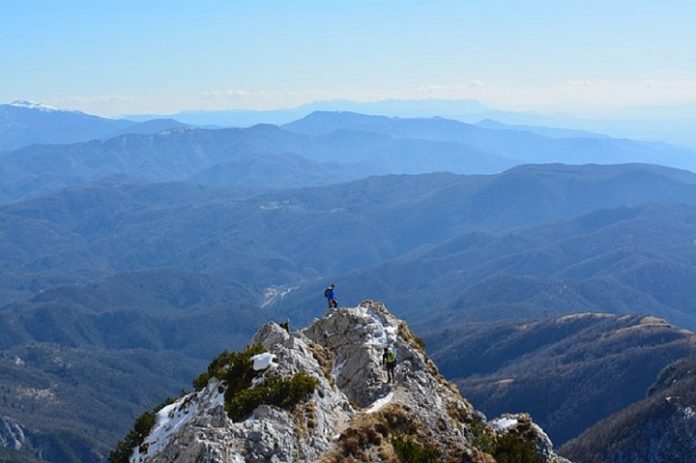Mountaineering is an activity that places a lot of pressure on the body. Strength, mental stamina, and skills are crucial when mountain climbers make steep ascents or even innumerable feet high. Before considering the type of meal to be taken, one has to plan the type of mountaineering trip they are undertaking.
Basics of Mountaineering
For instance, if it is prolonged or extreme. There are three types of mountaineering i.e.
- Alpinism- involves low-level routes. The routes are relatively below 5000m.
- High altitude- Involves any route above 5000m that is usually influenced by altitude and weather. It involves hiking on the ice and even snow.
- Ultra-lightweight is a form of mountaineering whereby climbers mount on very high peaks using lightweight gadgets.
Every mountaineering expedition will have a varying cost with the other one. For instance, the cost of manaslu expedtition can vary from the other trips. After knowing the budgets and further details of mountaineering activities, you can quickly learn what types of meals you should take to complete your mounting. This will enable one to keep their body strong and flexible to handle any force during hiking.
Here is an overview of the nutrition tips when planning for Mountaineering
Most climbers think a bag full of snacks is ideal for mountaineering, but this is not the case. Others believe that taking an excessive amount of sweets and fats will keep their body fit for mounting. If a climber does take an adequate amount of food, the body will start using the muscle protein. This can turn out to be more harmful to one’s health.
Carbs in the diet for mountaineers
Carbs are the most significant source of energy in the body. This is because it is digested faster and gets absorbed in the body easily. The primary sources of carbs are chocolate, sugar, rice, mashed potatoes, pasta, bread, raisins, dates, and even bananas. The smaller the size of a carbohydrate molecule, the less amount of water it requires for digestion. Complex carbohydrates are used to build glycogen. Glycogen is a source of energy and is stored in the muscles. The energy is used during lengthy workouts like hiking and climbing for long hours. The carb-rich foods that are easy to digest can be absorbed directly into the blood. This will make the muscles keep moving and functioning properly.
Essential proteins for climbers
When glycogen and fat in the body are used up when hiking, the body will start using the muscle to generate energy. Protein prevents muscle loss. This is why climbers need to include protein in their diet. Research has proven that each protein releases 4 kilocalories of energy, and every diet of a climber should contain 20% of protein. However, the release of energy from protein can take 3-5 hours; it is always advisable for the climbers to make proteins the night before hiking. Digestion of protein requires more oxygen as compared to carbs. It is believed that the chemical interaction caused by protein in the brain tends to increase consciousness. Proteins regulate body activity and recover muscle tissue, especially after hiking. Proteins also help produce hemoglobin in the body since there is less oxygen at higher altitudes. Consumption of protein is vital whether at low altitudes or high altitudes because climbers experience rigorous activities, resulting in damage to blood tissues, minor injuries, and even twisting and stretches. Some protein sources include eggs, beans, mushrooms, meat, chicken, fish, lentils, corn, and even walnuts.
Vitamins in climber’s diet
Vitamins are another important group that accelerates the rate of metabolism in the body. They are absorbed through foods like salads, bananas, carrots, tomatoes, lemon, oranges, and even sesame. Vitamins aid the climbers stay healthy and even improve their performance. Vitamins also play a crucial role in neutralizing lactic acid in the body. Taking high-acid foods, for instance, plum or lemon, will enhance the breathing system. This is because heights affect the level of oxygen. Climbers can also try taking packed or fresh juices because they are rich in sugar.
Fats and oils in the diet of climbers
Scientifically the body uses fat after using carbohydrates. Fats and oils generate energy in the body. Fats require large amounts of water and oxygen in the body to free energy. Fats need 6-7 hours to release their energy. The climbers should consume foods rich in fats and oils a day before hiking. Fats and oils tend to release more energy than carbs and proteins. They protect the body’s organs and help regulate the body temperature. They produce calories which are essential nutrition for climbers. Consuming low quantities of fats in a cold climate can make the body more tolerant of the cold. Some of the sources of fat and oils in the diet include olives, corn, cream, and even butter.
Climbers should also consume a lot of water because the body is continuously sweating and active. The climber’s diet should contain at least three litres of water. One can add salt or sugar to the water as the body loses minerals and salts during the activity. It is ideal to consume a lot of water during the resting time rather than take water after every few hours.
Wrapping up
In conclusion, the proper diet will make mountaineering more fun and memorable. The above article illustrates the diet components when preparing for mountaineering expeditions.

